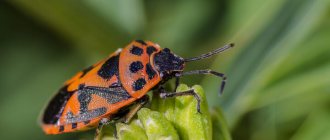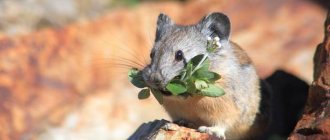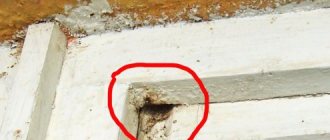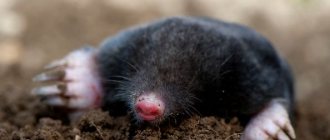What rodents live in dachas, in the garden and vegetable garden, underground: varieties
For summer residents, pest control on the site is relevant all year round: in summer and spring, pests eat the bulbs and roots of plants, vegetables, flowers, and in winter they gnaw the bark from trees. Summer residents value their work, and it is doubly offensive when self-grown cultivated plants, fruit trees, and vegetables are attacked by various pests. Many gardeners and summer residents throw up their hands; pest control often ends in nothing. The rodents disappear for several months, and then appear in larger numbers and with a good appetite.
If pests appear on your site, you need to get rid of them at any cost. Before taking action, let's figure out which rodents can live underground, in the garden, in the garden, and which of them are truly harmful.
Some of the most common unwanted pests include:
- Vole mouse
- Gray rat
- Mole
- Shrew
- Water rat
- Hares
- Some birds
Important: The most numerous group of pests are rodents. Their size ranges from 5-35 cm. It is difficult to fight rodents for the reason that these animals are careful and do not catch your eye. Among rodents there are smart animals, for example, a rat, and fighting such animals is especially troublesome.
The vole mouse is divided into several types:
- Common vole
- Red vole
- Field vole
common vole mouse is gray in color with a dark stripe on its back. The body length is about 10 cm. It eats grain and damages potato tubers and flower bulbs. The field mouse lives at a shallow depth underground. She breaks through complex, intricate passages and has a storage room where she carries all her supplies. Right there, underground, there is a mouse nest. The field mouse reproduces very quickly, especially in the summer. Every three weeks a new litter of up to 13 cubs appears. At the 21st day of life, young mice are ready for independent life, and at the 5th week of life they can already give birth to new offspring. Voles live in colonies.
Vole mouse
The bank vole is distinguished from the common vole by its reddish-brown color. The size of this rodent is no more than 11 cm. Red voles live alone. They build nests in shelters under stones or in the cavities of trees, under a pile of brushwood. The inside of the nest is lined with dry grass, and the entrance to the hole is covered with leaves. The red vole mouse gives birth to offspring 3 times a year, 3-5 young. It feeds on the seeds of plants and trees, in summer it switches to green foliage and shoots, and in winter it feeds on bark. The red vole is capable of climbing trees and its nests can be found in bird nests or birdhouses.
The field vole has brownish fur. This species can be distinguished from the common vole by its fur. The field vole has longer fur. The body length of the largest individual can reach 13 cm. It bears offspring 2-3 times per year. Lives in meadows, near trees and shrubs. It makes burrows underground in thick grass. It causes damage to plants, eats green shoots and leaves, and feeds on bark and shoots in winter.
Field vole
The gray rat is dangerous due to its proximity not only because of its damage to plants, trees, and animals. She is a carrier of infectious diseases. The rat's body length ranges from 19-25 cm. It has a long tail, which is slightly shorter than the body and ranges from 17-24 cm. The gray rat is also called a pasyuk. This animal is very careful, can adapt to various conditions and grasp the routine of human life in order to act without harm to itself. Generally, gray rats are active at night.
Pasyuki can feed on plants, grains, eggs, small rodents, and lizards. A rat, deprived of the ability to escape, can attack a person. Can swim. Rats can live in buildings (barn, basement, etc.), in burrows dug underground (the length of the burrow can reach 2-5 m), in places covered with vegetation. In a favorable year, a rat can produce litters up to 7 times of 9-10 pups.
Gray rat is a pest
The water rat lives near wetlands or in areas with high humidity. It feeds on vegetation, berries, roots, and seeds. Can swim and dive well. For the winter, when the water freezes, it moves closer to human lands and digs complex passage holes in gardens, which attract rats with their loose soil.
The shrew is similar to a mouse, but differs in its elongated nose in the form of a proboscis. The animal feeds on larvae, earthworms, and insects living in the soil. If you look at it from this side, it is beneficial. But on the other hand, the shrew digs up the garden in search of its passages, damaging the root system of plants. Therefore, summer residents are fighting the animal.
The shrew is a garden pest
The mole , like the shrew, feeds on invertebrate worms and insect larvae. But this damages the root system of vegetable crops. You can often see numerous holes dug by moles. The body of a mole varies between 5-21 cm, and its weight can reach 170 grams. Mole fur is velvety, thick, smooth. The animal is blind, but has very good hearing and sense of smell.
Pests also include hares , which actively damage the garden in the winter-spring period, and birds , which eat fruits, berries, and nuts in the summer. Hares gnaw tree shoots, bark, and destroy buds. Young trees and shrubs are especially affected.
Mole on the site
Mole holes
Types of large rodent pests
For the fight against rodents to be successful, you need to know this enemy.
Gophers - these rodents settle in virgin lands near grain crops, and often right on them. Having accumulated fat reserves over the summer, they fall asleep in their burrows throughout the winter. And in the spring, when they wake up, they destroy all the plants in the vicinity of their burrows, damaging tens and hundreds of hectares of crops. Gophers are especially abundant in the southeast. When drought begins and virgin steppes burn out, these rodents move en masse to the crops.
Gophers spoil crops
The hamster is the main pest of vegetable gardens. He spends the whole summer busy hauling food supplies for the winter into underground storerooms. In the fall, in one such pantry you can find a whole pound of potatoes and large reserves of grain.
You can meet hamsters in the garden.
The water rat will not refuse vegetables, but it also harms trees. In gardens and young forest plantings, water rats make underground passages from tree to tree and gnaw off the bark around the root collar. When water rats dig holes, they throw out heaps of earth that resemble molehills. Therefore, they are often confused with moles. Gardeners and gardeners often attribute the “tricks” of the water rat to an innocent mole, which feeds on earthworms and insects and never touches plants.
The damage caused by water rats is also considerable.
The gray rat constantly lives in granaries and warehouses, feeding on grain and various foods. This is a strong and cautious rodent. Sometimes rats enter livestock buildings and kill piglets and poultry.
Rats prefer barns and storage areas.
Gophers, hamsters, water rats and gray rats are quite large animals. However, small rodents - the size of a mouse and small hamsters and mice, as well as insectivorous animals - shrews, also cause considerable damage to plantings. They are divided into two groups: mice and voles.
How to deal with moles in the garden: effective methods, folk remedies, tips
Important: The mole has well-developed hearing. Gardeners and summer residents know this feature and successfully use it in the fight for the safety of the harvest.
The number one method in the fight against moles is noise repellers. It is inhumane to destroy this animal, because it does not eat tubers of vegetables and flowers, and does not destroy stocks and vegetation. On the contrary, mole is even beneficial for the soil. It provides good soil drainage. Another thing is that in the process of its activity the mole disrupts the root system of plants and can also damage the appearance of a well-groomed lawn. It should simply be expelled from its territory so that it can continue to obtain its food in the form of larvae and worms in another place.
Noise creates unfavorable conditions for the mole's life. To do this, use various devices, both homemade and store-bought.
Let's consider the designs and options for noise mole repellers:
- The simplest thing you can do is to place sticks around the perimeter of the area or in a checkerboard pattern. Put ordinary tin cans on the sticks, which will make characteristic sounds at the slightest breath of wind.
- Plastic bottles are used according to the same principle. Holes are first made in the bottles so that the wind blows when it gets into them.
- Experienced people know such an old-fashioned method as reeds. To do this, long reed stems are selected, the top is cut off to form a tube. Then these tubes are inserted into the holes, leaving about 0.5 m of its length above the ground. The wind “howls” when it gets into these tubes and perfectly scares away the mole.
- There are also special sound repellers to combat moles. It is recommended to place several of these devices on the site to achieve good results.
The method of placing cans and noisy devices on the site helps to get rid of another “unwanted guests” in the garden - birds. Starlings, sparrows, jays and other types of birds can mercilessly peck ripe berries and fruits, leaving practically nothing for the owner.
Folk methods of fighting moles
Moles don't like the smell of certain plants. Just like rats and mice, moles cannot tolerate the smell of narcissus bulbs and hazel grouse flowers. Black beans are another plant that is the mole's enemy. Summer residents who plant these plants around the perimeter or in a checkerboard pattern on their site note that the number of mounds of earth decreases and eventually disappears completely.
Important: It is recommended to crush daffodil bulbs before placing them in holes; they are a natural poison for moles and other rodents.
There are other smells that repel moles:
- Tar
- Naphthalene
- Kerosene
- Calcium carbide
Soak pieces of fabric in the chosen solution and then bury them in the ground.
The royal hazel grouse flower helps in the fight against moles
In garden supply stores you can purchase mole traps of various designs. Catching a mole in such traps is not an easy task. First, you need to set a trap where the mole begins to dig. Secondly, the mole is very smart, he has a well-developed sense of smell, and he knows how to avoid traps.
For a trap to work, you must do the following:
- First, find the main passage.
- Dig a hole outwards from this passage.
- Make a hole 1 m from the hole in which to place the trap.
- The trap should be covered with earth.
Thus, a draft will appear in the mole’s hole, which the animal does not like. Soon the mole will come to repair the hole and fall into the trap. A properly placed trap can go off within 1 hour.
Important: The mole is very voracious, and its peak activity occurs at dawn. At this time, you can see the mole looking for food in the upper layers of the soil. There will be noticeable movement of the soil. At this point, you can throw the mole out of the soil with a shovel. This must be done sharply and it is important to accurately determine the location of the mole.
A dog is another reliable way to catch a mole. Having sensed the location of the animal, the dog begins to dig the ground, and itself gets the mole.
Some summer residents resort to the most brutal measures if they cannot remove the mole by humane means. Seeing a fresh mound of earth, they dig a hole and pour water from a watering hose under high pressure. The mole, sensing danger, climbs out.
The best way to protect a site is not to fight the mole, but to prevent it from entering the site. If you have seen a mole in neighboring areas of a mole’s hole, but have not yet found one in your own home, it’s time to start taking preventive measures. To do this, you can dig a fine metal mesh around the perimeter of the plot or garden to a depth of 0.5 m. Part of the mesh should be left above the ground. It can take a lot of mesh for such a fence; the process of burying the mesh is labor-intensive, but it is worth it. Earthworms will be able to move freely through the holes in the mesh, but the mole will not be able to get through.
It is worth understanding that the mole does not hibernate, so it can appear on your site at any time.
Rodent control
Regardless of what pests have settled in your summer cottage, you need to know how to get rid of rodents in order to obtain and preserve the harvest. To combat all types of rodents, traditional mousetraps, as well as glue-based traps, are used. Glue traps can be purchased ready-made or you can purchase special non-toxic glue to create them, which retains its properties for two weeks. Both ready-made traps and glue for them are produced by the MediLIS company.
If there are a lot of rodents in the country, traps alone will not do. It is better to use poison baits. These can be ready-made baits with an attractive smell and taste for rodents, containing poison. Or an additive for making your own baits. It is mixed, for example, into a boiled egg or added to sugar syrup. The bait and ingredients for its preparation, called Mediret, are also produced and sold by the company MediLIS.
Source of the article: https://medilis.ru/articles/gryzuny/gruzynu-na-dache-foto.html











